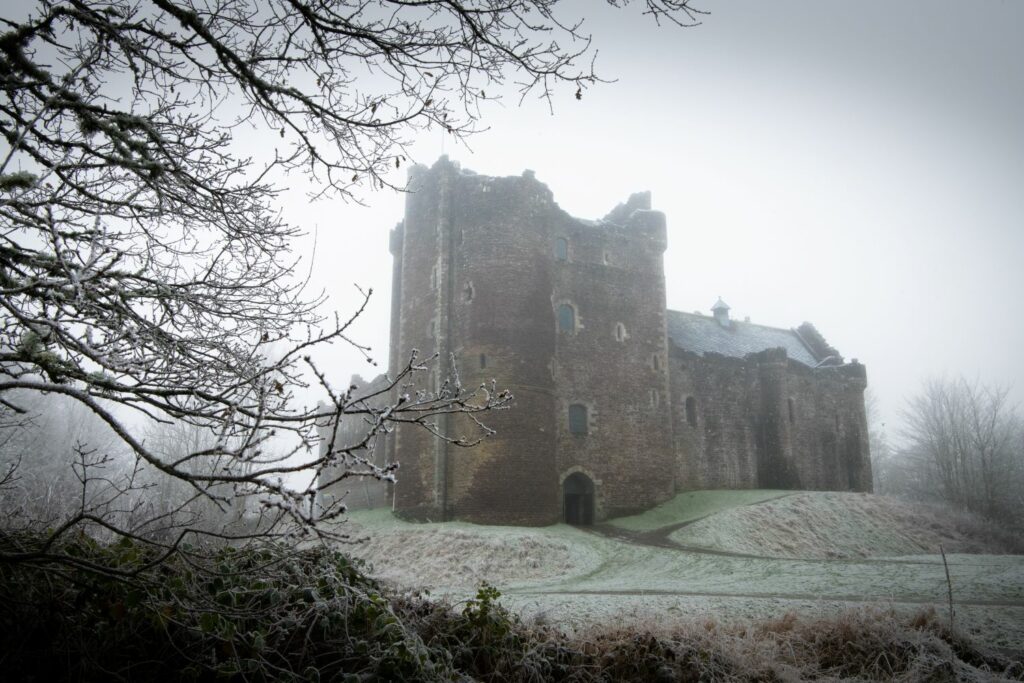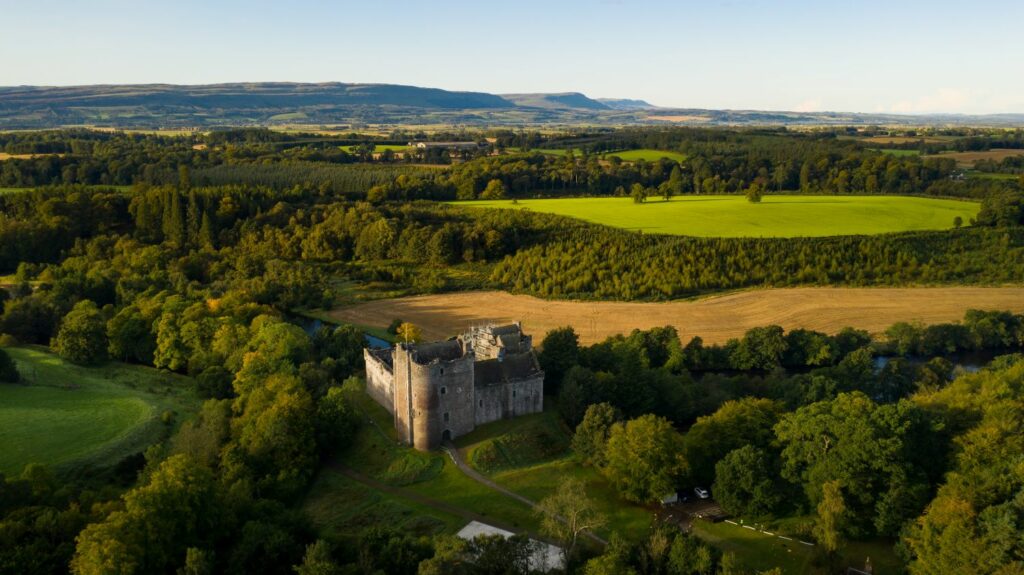Who was the Duke of Albany?
Robert Stewart, Duke of Albany, was born in around 1340, the second-eldest son of King Robert II. A shrewd politician, Albany expanded his power by acquiring the earldom of Menteith in 1361, through his marriage to Margaret Graham. He then became Earl of Fife in 1372 by clever political maneuvering.
He was created Duke of Albany in 1398, having already built Doune Castle on the site of an earlier seat of the earls of Menteith – indeed, remains of this earlier castle were incorporated into Doune Castle.
A competitive family
King Robert II came to the throne in 1371, and struggled to control his kingdom, not helped by his sons and their constant vying for power.
King Robert II had five legitimate sons, all with varying degrees of notoriety. The two we are most concerned with are the eldest, John, Earl of Carrick, who later became King Robert III, and our Robert, Duke of Albany (who for ease we will just refer to as Albany going forward!).
Worth a special mention is son number three, Alexander, Earl of Buchan, better known as the Wolf of Badenoch. Alexander’s style of lordship was aggressive to say the least, and he is notorious for sacking Elgin Cathedral in 1390 and being subsequently excommunicated for it.
Due to King Robert II’s age, and the poor health of his eldest son John, Albany was created Guardian of Scotland in 1388, effectively ruling the kingdom.
When the King’s eldest son John did eventually come to power on the death of his father in 1390, he took the name Robert III. However, he had never fully recovered from being injured by a horse-kick in 1388. So Albany continued to rule Scotland as Guardian. For this reason, Albany is known as ‘Scotland’s Uncrowned King’.
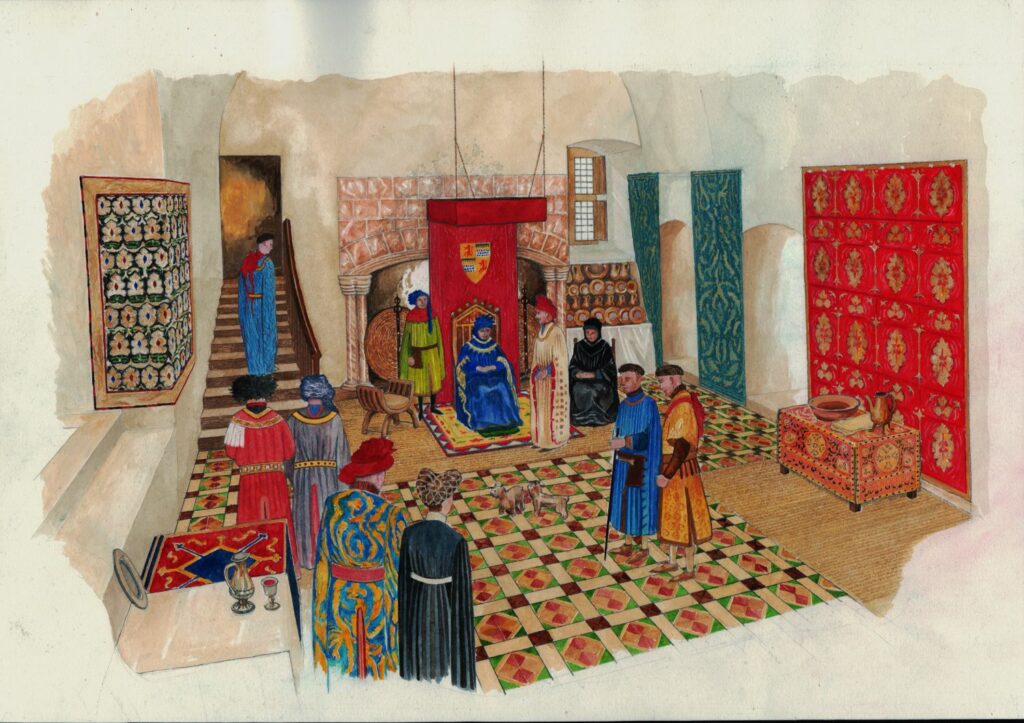
Illustration of the duke’s hall as it may have looked in Albany’s day, Doune Castle.
The Duke of Rothesay
In 1393, Robert III attempted to exert some influence over Albany and promoted his own son David to power as Guardian of Scotland instead. Five years later, David had been created Duke of Rothesay and Robert Duke of Albany.
These two dukedoms were the first ever in Scotland.
However, the King’s faith in his son David appears to have been misplaced. Even as David was being named Duke of Rothesay, he was co-operating with some of his father’s opponents to remove the King from power. By 1401, David – according to some chronicles – was behaving in unruly and frivolous ways, preferring other men’s wives to his own, and bypassing his council and chamberlain to take revenue from the royal burghs as he wished.
In late 1401, David was arrested by men loyal to Albany, and imprisoned first in St. Andrews Castle, and then Falkland Castle, which belonged to Albany. This imprisonment, again according to contemporary chroniclers, was for the good of the kingdom, and so that David might see the error of his ways. However…
A suspicious death in Falkland
On 26th March 1402, David, Duke of Rothesay, died while imprisoned in Falkland Castle.
It was claimed that David had died of dysentery, although many asserted that the real cause was starvation. Although Albany was not there at the time, many believed him responsible.
A general council was called in May 1402, which declared Albany to be innocent. It is likely that Albany engineered this result with help from noblemen who were his allies. As the King was still viewed as incapable of ruling effectively, and his second son, James, was only 7 years old, the Guardianship of Scotland once again returned to Albany.
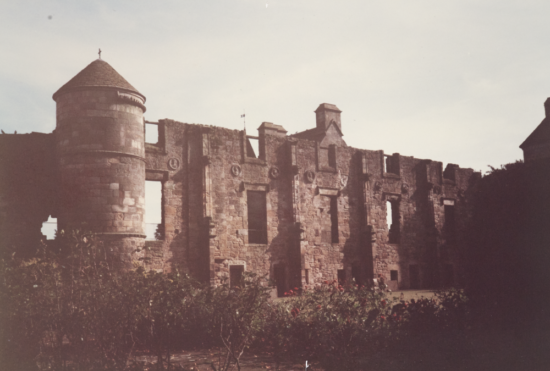
© Courtesy of HES (Inventory of Gardens and Designed Landscapes in Scotland Collection)
A tarnished reputation
There is no doubt that Albany’s reputation in some circles was tarnished by the death of David, whether he deliberately engineered it or if it was just a very fortunate coincidence.
It certainly seems that King Robert III now saw his scheming younger brother as a serious threat to his second son, James. In 1406, the King sent 12-year-old James away to France, and it is likely that one of the reasons for this was to keep James out of Albany’s clutches.
In further misfortune for the King, his son’s ship was intercepted by the English. Robert III died on 4th April 1406, shortly after hearing of his son’s capture. James, now King James I, was to spend the first 18 years of his reign imprisoned in England.
It will surprise nobody to discover that Albany did very little during this time to secure James’s release. If he did not actively conspire to keep James captive, he certainly did not try to pay the ransom.
This is another reason that Albany’s reputation has suffered, although his actions (or lack of) are perhaps understandable, as the English would have been very reluctant to give up so valuable a hostage as James.
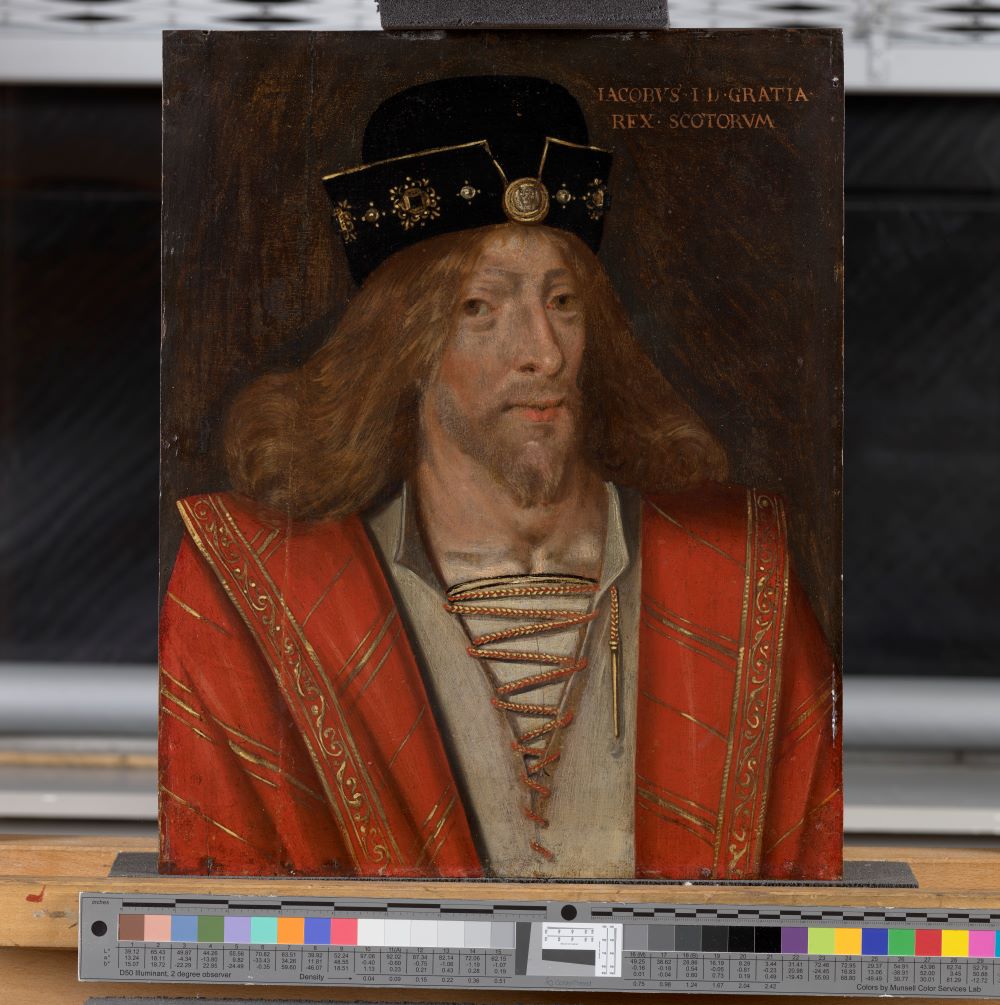
Unknown, James I, 1394 – 1437. Reigned 1406 – 1437. National Galleries of Scotland. Purchased 1909.
What happened to the Albany Stewarts?
The Duke of Albany died in 1420, at the ripe old age of 80, having been King of Scotland in all but name for the best part of 30 years.
The title of Duke of Albany and the governorship of Scotland passed to his son, Murdoch.
In 1424, due to a changing political situation in England, King James I was released and returned to Scotland.
Unsurprisingly, James was not best pleased with the Scottish noble families who had not bothered to try and get him out of captivity, as well as being responsible for the death of his brother and sidelining his father.
If that wasn’t enough motive to kill, doing so would also allow him to take control of their lands and income – more money and power!
So unsurprisingly, in 1425, the unfortunate Murdoch – along with his son and father-in-law – were executed, and Doune Castle became a possession of the Crown.
Talk about the sins of the father being visited upon the children!
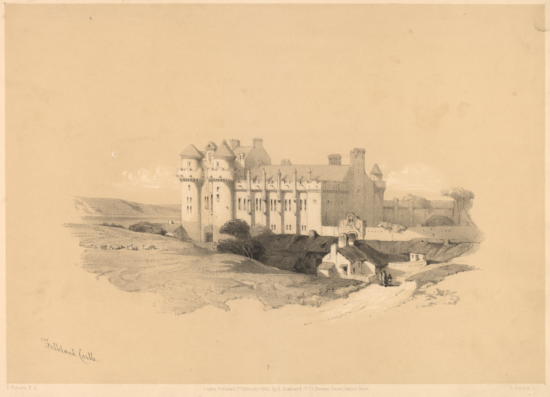
View of Palace from South Titled “Falkland Castle”; “D Roberts, R.A.”; “A Durand, lith.”
But did the Duke of Doune… do it?
Without clear evidence we can’t know for certain.
But my take on whether Albany murdered David? It might not have been in person, but that doesn’t mean he didn’t.
Despite his tarnished reputation both at the time and in subsequent years, Albany was popular with many of his contemporaries. He was certainly an astute politician and a competent governor.
I think he was also extremely ruthless. Rightly or wrongly, he regarded his brother and his offspring as weak, and genuinely believed that he, Albany, made the better ruler and was better for the kingdom.
My opinion is that while he got others to do the actual dirty work for him, Albany had made the decision that David was not getting out of Falkland Castle alive. Starving David would have weakened him before killing him and made him more prone to disease, and the onset of dysentery was just a fortunate (from Albany’s point of view!) way of hurrying things up.
Don’t get me wrong, I have a soft spot for the Duke of Albany, as we often do for a ‘good villain.’ I get to work in his marvelous Doune castle, for one thing. He is a fascinating character to learn about and discuss.
Would I like to have met him? Yes.
Got on his wrong side? Absolutely not…
Keen to find out more stories of Scotland’s past?
Slide into the past and explore Scotland’s ice-skating history. Or join us as we look at the life of William Douglas, the man behind making Aberdour Castle one of the most luxurious in Scotland.
Or, maybe this blog’s inspired you to trace the steps of ‘Scotland’s uncrowned king’- if so, why not take a trip to Doune Castle, open all year round.

